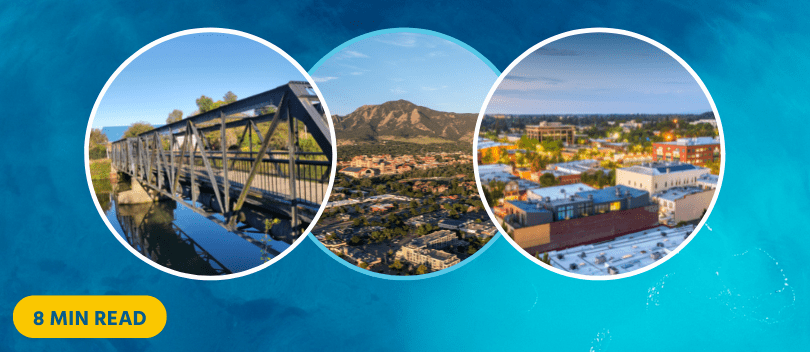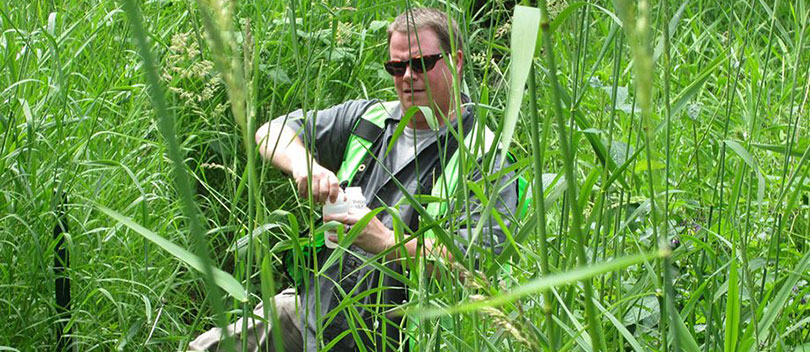
Inframark’s Data Management Strategy: Optimizing Regional Data with Hach WIMS
Inframark’s approach to managing regional data is a key component of its operational efficiency across more than 161 facilities. With over 70 databases across its network, the company uses Hach WIMS (Water Information Management System) to standardize, report, and optimize regional data, ensuring consistent performance and regulatory compliance.
Note: This is from a 2023 Interview from the WIMS National User Conference. Emily Ryback has since moved on to Nexus, but continues to use WIMS.
The Inframark WIMS Program
Inframark has invested significant resources into ensuring the effective use of Hach WIMS across its operations.
- John Holland, Senior Operations Data Analyst, is the key player behind the internal and external support for WIMS. He describes his role: "I work on the WIMS Team providing customer support for internal customers as well as implementation for external customers." He further explains that he was brought in specifically to implement WIMS. “They needed a way to do compliance… They put out the call to hire a WIMS Specialist and, y’know, I fit the bill.”
- Emily Ryback, WIMS Program Manager, manages the centralization of WIMS across Inframark’s entire portfolio of plants. She states, " I handle the overall program management for information which involves just building the program, building the different pieces of parts that are needed for the entire company." Her work is essential for ensuring that WIMS runs consistently across all facilities.
Ensuring Compliance for Wastewater Facilities
In terms of why Inframark first implemented WIMS, Ryback explains, “Ultimately, WIMS is important to inform our work because we want to ensure that our compliance reporting is accurate and precise and ensuring that we provide that service to our customers is extremely important.” Expanding on that, Ryback states, “You know, [Inframark] takes pride in the certain, you know, the service that we provide to our customers and compliance is extremely important for that.”
Holland says, “Yeah, compliance is key. That’s the driving force and I think that's pretty common for anyone first getting into WIMS. You almost always buy WIMS so that you can have a way to do your compliance reporting more easily.”
But as their processes and data management have expanded, their focus has moved beyond just compliance. According to Holland, as program matures in our company, we're starting to get more into process control and how we're managing the health of each individual system. Which is hard to do until you have sort of a critical mass of data already in the system.”
He continues, “As programs are maturing and they're gathering a bunch of that data we start moving from only being concerned with compliance, which is always the top key number one key. Now we can start doing analytics on the data. We can start worrying about…optimizing process and we can move in to worrying about…chemical inventory and chemical costs. And we can get more into the individual aspects that really help flesh out the main uses of WIMS.”
Chemical and Power Usage: Process Optimization for Facilities
In describing how the use of WIMS has expanded beyond compliance reporting, Ryback added, “Another piece of it is once we can focus on what John talked about, chemical usage or power…then once we have that built out for our individual projects, then Inframark as a company can focus on that enterprise level data mining piece so that we can really get a good picture of what metrics of the data we’re providing for our board members and our CEO.”
Centralized Support for Accurate Regional Data Management
Before Inframark can attain full process optimization and standardization across each of their facilities, they first have to prioritize cleaning their data so that everything is as accurate as possible. Still, Ryback & Holland are optimistic about the possibilities provided by centralization and how that data can provide value even externally when shared with the public.
In describing the importance of centralizing and streamlining data, Holland notes, “I think that information is in a good position along with some of the other sort of larger companies that are gathering all of this kind of data. We're going to be able to aggregate information regionally. And as that information gets disseminated among the general population, we can really show trends [such as] rainfall decreasing, you know, lake levels, reservoir levels decreasing.”
“I think having all of that information more readily available to tell the story, I think is important to just sort of even outside the company…Having real numbers to back up what everyone already kind of feels, I think will be important to help the cultural subconscious […] as we can demonstrate what's actually going on.”
Enhancing Cross-Regional Coordination with Centralized Data
WIMS helps Inframark ensure effective cross-regional coordination by centralizing all regional data in one platform. As Ryback explains, “Each region unique challenges when it comes to water. The West has water shortage issues. So being able to compile that data into predictive models could help our customers to better determine some of their next steps that they need to make decisions on moving forward with infrastructure rehabilitation.
The data that they extract from WIMS can be used in creating strategies for resource allocations and community planning. It can help answer, “What do we need to do so that we can protect our most valuable resource? Which is water.”
Even with the differences between regions, Holland suggests that connections can be found between regions where data they’ve already collected and analyzed can inform their approach: “If we start seeing the same type of trend that we already have the data in California, now we can make actionable decisions based on what we're seeing…What we already know happened.”
The Inframark Data Management Journey
The centralized system allows for faster, more informed decision-making and fosters collaboration across teams, enabling Inframark to address issues efficiently and maintain operational alignment.
Inframark’s data management is a common one: their journey began with a pain point which was the desire to ensure compliance. From there, they have taken steps to roll out implementation across their many facilities and are careful not to make any drastic changes that can destabilize their processes. They’ve put a focus on data hygiene and creating standardization across their reporting.
They have become super users who not only use WIMS regularly but have also informed the development of the software by being active members of the WIMS Community, attending conferences regularly, engaging AQI’s developers in the pilot process, and maintaining communication with other utilities that use the software.
The Role of WIMS in Managing Regional Data for Inframark
Inframark’s data management strategy through WIMS supports the company’s efforts to streamline operations, ensure regulatory compliance, and optimize regional data across its network of treatment plants.
By standardizing data, centralizing support, and leveraging data to improve processes, Inframark can make informed, data-driven decisions that enhance operational efficiency while maintaining compliance.
Find Your Partner in Change Management
As drinking water & wastewater facilities progress on their digital transformation journey, one of the main challenges they face is resistance to change.
Technology partners can help organizations guide their change management strategies to ensure the success of any new technology projects. While every water organization is unique, many of the challenges are similar: legacy systems, data silos, lack of resources, etc.
Experienced technology partners like Aquatic Informatics have seen it all before. We can help you achieve streamlined quality control for your environmental data. From source water through to the receiving environment, our interconnected data management platforms can help you drive the efficient management of water information across the water cycle with minimal disruption to your operations.
Get in touch to discuss your water data projects, check out our upcoming product demo, or schedule a personalized demo of our platforms.
Continue Learning





